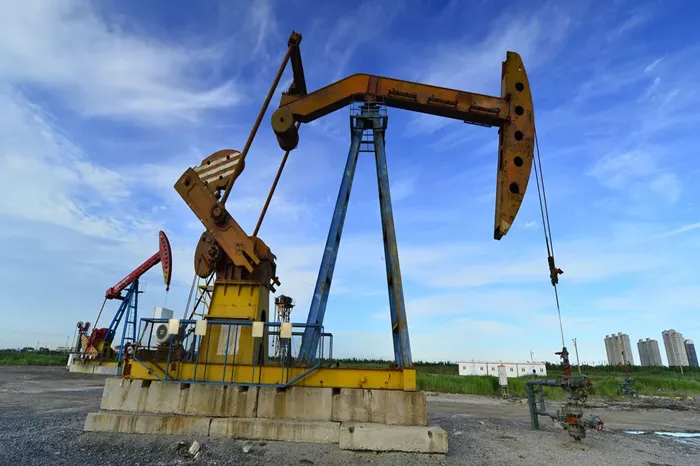Oil companies are increasingly wary about investing in production growth due to fears of an oversupplied market and falling oil prices compared to last year. This sentiment was echoed in the third-quarter results of SLB, the world’s largest oilfield services provider, which highlighted persistent weakness in the short-cycle market, particularly within U.S. shale operations.
While offshore and other long-cycle projects—known for their resilience to price fluctuations—continue to see robust investment, SLB executives noted a decline in U.S. activity and spending. They anticipate this trend will persist into next year, with spending levels remaining flat or slightly lower.
International Offshore Developments as Growth Drivers
SLB’s CEO, Olivier Le Peuch, identified offshore drilling and development as the future growth engine for the industry. He commented on the company’s third-quarter performance, noting, “This performance was achieved despite an environment where short-cycle activity growth softened and some international producers exercised cautious spending triggered by lower oil prices and ample global supply, while land activity in the U.S. remained subdued.”
The outlook from SLB this year is less optimistic than it was in October 2023, when Le Peuch had expressed confidence in a “multiyear growth cycle” with increasing upstream spending. Currently, while international investment continues to rise, oil and gas producers are adopting a more conservative approach to spending.
“Although the rate of upstream spending growth has moderated in the last few months due to the macroenvironment, we continue to expect a sustained level of upstream investment in the years to come,” Le Peuch stated.
Diverging Trends in Spending
Le Peuch indicated that offshore projects will drive investment, as SLB has more exposure to international markets compared to U.S. shale, where growth has stagnated. He projected that by 2025, upstream spending in international markets could grow in the low to mid-single digits, while North American spending is expected to be flat or decline slightly. This outlook, he noted, will depend significantly on geopolitical conditions and commodity prices.
In the latter part of this year, oil prices have come under pressure due to concerns of oversupply, driven by increased output from non-OPEC+ producers, uncertainty surrounding OPEC+ supply levels, declining demand from China, and slowing economic growth in the U.S. and Europe. Le Peuch remarked, “This has resulted in a cautionary approach to activity and discretionary spending by many customers as highlighted in our third-quarter results.”
While long-cycle deepwater projects and most capacity expansions in the Middle East remain economically favorable, SLB does not foresee a rebound in U.S. activity in the near term. Any potential increases in gas rigs may be counterbalanced by further declines in oil rigs, driven by greater operational efficiency.
Challenges in U.S. Shale Activity
For the fourth quarter, SLB predicts that exploration and production companies will exhaust their budgets for U.S. onshore drilling, along with cautious discretionary spending from certain international clients. SLB is not alone in sounding the alarm about declining U.S. spending levels; smaller service providers are also grappling with a challenging domestic market as reduced activity affects their pricing structures.
Liberty Energy, for example, reported in its third-quarter results that the fracturing markets are adjusting to the slower development programs of exploration and production operators for 2024, primarily due to efficiency gains achieved in the first half of the year.
Recent estimates from Wells Fargo, cited by The Wall Street Journal, indicate that oil output per rig in the U.S. shale sector rose by 13% last year and is expected to increase by another 15% in 2024.
In light of diminishing customer activity and market pressures, Liberty Energy plans to modestly reduce its fleet size by approximately 5%. The company noted that heightened uncertainty in energy markets has made operators reluctant to accelerate completion activities ahead of the new year, projecting a low double-digit percentage reduction in fourth-quarter activity, exceeding typical seasonal softening.
Liberty Energy anticipates a rebound in completions activity early next year to support stable oil and gas production targets. It noted that since late 2023, U.S. crude oil production has remained relatively flat, with potential declines if current completion activity levels persist.
Market Landscape and Future Outlook
The Dallas Fed Energy Survey from last month highlighted the challenges faced by service providers, attributing difficulties to operator consolidation within the upstream sector. Executives noted that the lack of consistent work has made it difficult to maintain skilled labor.
As smaller oilfield service companies struggle to compete with larger operators for resources, the combination of lower oil prices and increased uncertainty has led upstream operators to adopt a more cautious stance on future spending, particularly in the U.S. shale sector. Nevertheless, the long-term fundamentals of oil and gas markets remain relatively unchanged since last year, suggesting that energy security and a continued rise in demand will benefit the service providers that navigate the current cycle successfully.
Related topic:
What Kind Of Fossil Fuel Is Shale Gas?

